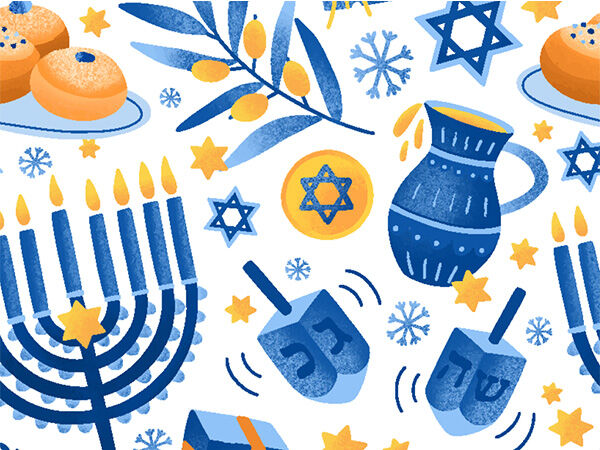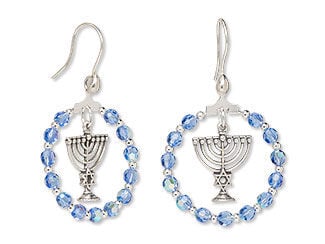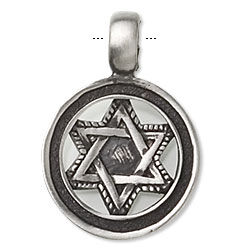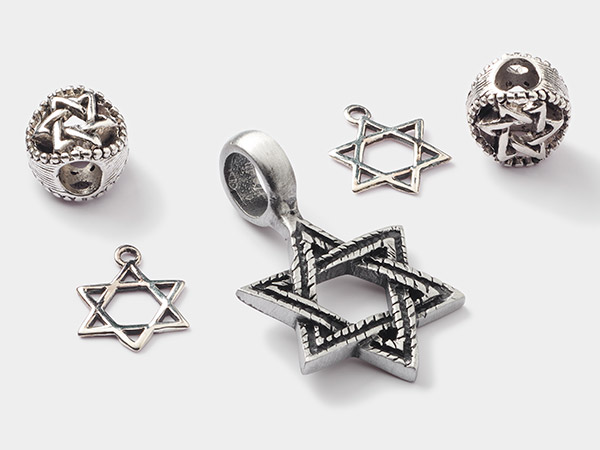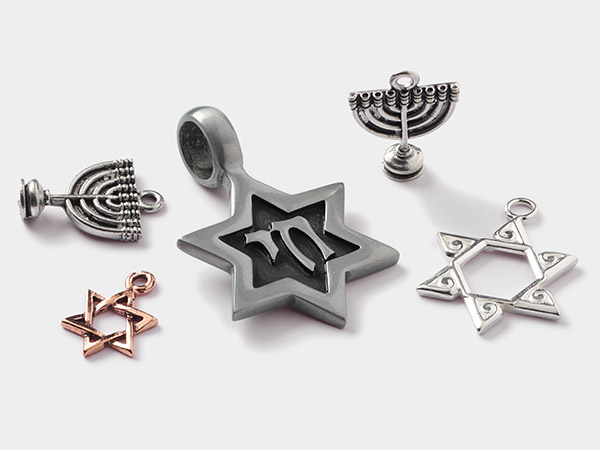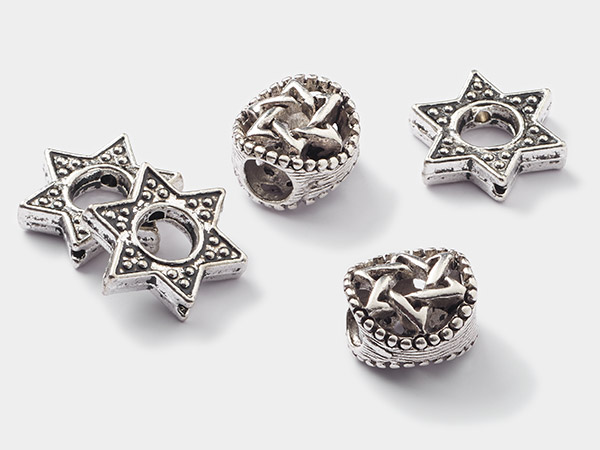Shedding Light on the Story of Hanukkah
Hanukkah is also spelled Chanukkah, Chaunukah, Hannukkah and Channukah. Each spelling is technically correct, emphasizing the diversity of the celebration. Regardless of the chosen spelling, Hanukkah stands as a period of reflection and rededication.
Originating after the creation of the Tanakh, the three canon collections constituting the Hebrew Bible, Hanukkah lacks certain prescribed observations, such as abstaining from work or school. Despite this, the celebration has garnered participation from nearly fourteen million Jews globally. To facilitate a deeper understanding of the holiday and assist in selecting meaningful gifts, let's delve into the origins of this cherished celebration.
The Origin of Hanukkah
Under the rule of King Antiochus IV Epiphanes, the Jews of Judea and Samaria (regions now encompassing modern-day Israel and the West Bank) experienced a severe cultural assimilation in the 2nd century BCE. Governing these areas as part of the vast Seleucid Empire, the king actively disseminated Hellenism and its pantheon of gods throughout the expansive territory. He not only prohibited Jewish customs but also compelled the people to adopt the Greek religion.
In his pursuit of power, he infiltrated the Holy Temple of Jerusalem, defiling its sanctity by installing a statue of Zeus. To further desecrate the sacred grounds, he ordered the ritual slaughter of pigs in the ominous shadow of the idol. His goal was to tarnish the spiritual integrity of the temple, leaving the Jewish community without a sacred refuge.
Instead, his actions achieved more than he intended—they provoked such profound outrage among the Jews that they took up arms in an open rebellion led by the priest Mattathias and his sons.
Mattathias perished during the conflict, and his son, Judah Maccabee, stepped into the role of leader. The uprising, known as the Maccabean Revolt, drew its name from him, and the narrative is chronicled in the books of First and Second Maccabees. Judah Maccabee, alongside his comrades, eventually overthrew the Seleucids, reclaiming the Temple of Jerusalem. Following its liberation, a decree was issued to reignite the menorah, symbolizing the temple's rededication. Due to the disruptive actions of the Seleucids, only a solitary cruse, a small clay jug of pure, untainted olive oil, remained—enough for just one day of illumination.
As purification typically requires a seven-day process, especially after engaging in battle, uncertainty loomed over the victorious Jews. How could they sustain the menorah's flame for seven days? Nevertheless, adhering to the commandments, they ignited the lamp and began the journey of ritual purification. When the Jews returned to the temple the next day, they were astonished to find the menorah still burning. They realized the oil had been blessed by G-d (spelled out of a respectful desire to keep this article in line with halakha, Jewish Law), allowing it to burn far longer than humanly possible—a testament to the transcendent intervention of G-d.
For seven days, the menorah burned on a sole cruse of oil—the period necessary for the Jews to attain spiritual purity and produce fresh, untainted olive oil to replenish the lamp. Consequently, this occasion evolved into a festival commemorating both the triumphant reclamation of the temple and the remarkable endurance of the oil. Celebrated annually on the twenty-fifth day of Kislev according to the Hebrew calendar, the holiday serves as a testament to these miraculous events. It's worth noting that due to variations between the Jewish and Gregorian (modern) calendars, the date of Hanukkah varies each year.
Celebrating Hanukkah Today
In the present day, Hanukkah has embraced certain elements reminiscent of the secular version of Christmas—a festive celebration of life, family, and joy marked by the exchange of gifts and playful games. Many of the customs that persist today, such as gelt coins and dreidels, maintain connections to traditional practices, blending the old and the new in a vibrant celebration of the season.
Menorah (or Chanukkiyah)
In Hebrew, menorah translates to lamp or candelabra, whereas chanukkiyah specifically denotes a menorah used for celebrating Hanukkah. Notably, the term chanukkiyah is a recent addition to Hebrew, emerging during the language's revival as it transitioned from a sacred to a spoken and written language at the close of the 19th century.
In virtually every Jewish household and many public offices, you'll find a menorah—a distinctive nine-branched candelabrum. Interestingly, the original menorah in the Temple of Jerusalem, crafted according to instructions supernaturally given to Moses, differed in design, featuring seven branches and fashioned from pure gold. The question naturally arises: why the variance in the number of branches?
According to halakha, the seven-branched menorah is reserved exclusively for use within the Temple of Jerusalem, necessitating a distinct design for other menorahs. The Hanukkah menorah, known as the chanukkiyah, stands out with its nine branches and a slightly different structure compared to the Temple menorah. When incorporating menorah images into creative designs, it's important to feature the less-sacred nine-branched menorah.
The lighting of the chanukkiyah is a simple yet meaningful ritual that unites everyone in the household. At sunset, the process begins with the shammash (central candle known as the helper or servant), used to ignite the first branch of the chanukkiyah. Each day of Hanukkah sees the lighting of an additional branch, culminating on the eighth and final day when all eight branches are ablaze. Before the lighting begins, special blessings are recited, followed by the singing of traditional songs. Subsequently, the entire chanukkiyah is relocated to a doorway or window, symbolically connecting the celebration to the outside world.
While the chanukkiyah is intended to be lit exclusively during Hanukkah, the menorah's imagery holds a significant place as one of the most iconic symbols of Jewish faith, alongside the Star of David. Jewelry adorned with this design is often chosen as meaningful gifts. If you're seeking to craft a special present for Hanukkah, menorah-inspired creations, like menorah drops, serve as an excellent starting point.
The Star of David
While not directly tied to the celebration of Hanukkah, the Star of David has evolved over the years to symbolize the Jewish people collectively. Originating as a symbol for Zionists—those advocating for the re-establishment of the Jewish homeland—it has gained widespread recognition to the extent that the flag of Israel prominently features the Star of David. Although briefly repurposed as a symbol of persecution, it has concurrently served as a source of pride and personal identity for Jews worldwide. Today, charms and pendants featuring the Star of David make exceptional additions to jewelry pieces, offering a subtle yet powerful image.
The Dreidel
During Hanukkah, another common sight is the spinning of the dreidel, a game particularly enjoyed by children. The dreidel, a small spinning top with four flat sides, features four Hebrew letters on its surface. However, the specific letters depend on your location. Outside of Israel, the letters are nun, gimel, hei, shin, collectively representing the phrase "nes gadol haya sham" (a great miracle happened there). Conversely, inside Israel, the letter shin is replaced with pe, transforming the phrase into "nes gadol haya po" (a great miracle happened here—in Israel ).
Hanukkah Gelt
In contemporary times, the term gelt has two meanings, both intwined with the traditions of Hanukkah. The first takes the form of small, golden, foil-wrapped chocolate coins widely embraced during the Hanukkah season. These delectable treats not only add a touch of sweetness to the season but also play a role in children's games using the dreidel.
Beyond the realm of delicious treats, "gelt" carries a broader meaning, signifying money. This deeper association transcends mere currency, becoming a way to express generosity and charity. This cultural tradition extends to the exchange of gifts among friends and family, encapsulating the spirit of giving during Hanukkah.
Consider adding a personal touch to your celebrations by crafting Hanukkah-themed jewelry. Whether it features the chanukkiyah or the Star of David, these handmade pieces make heartfelt gifts.
Creating Hanukkah Jewelry
If you're feeling inspired, here are some steps to guide you in crafting your own Hanukkah-themed jewelry. Start by selecting your colors, and while experimentation is encouraged, consider the symbolic significance of blue and white. These two colors hold historical meaning for Jews and are notably the historic colors of the tallit, the Jewish prayer shawl. Blue and white are also the official colors for the flag of Israel. So, as you delve into creating, keep in mind the rich cultural ties and symbolism that these colors bring to your Hanukkah-themed pieces.
Incorporating blue crystal beads into your design can be stunning, whether used with golds and silvers or combined with white elements, representing purity. In Judaism, the color blue symbolizes divinity through its association with the vastness of the sky and sea. For an even more immersive oceanic ambiance, consider opting for blue pearls or any combination that resonates with your creative vision.
Hamsa Hand and Chai
Two additional symbols hold significant meaning for Jews, both in Israel and around the world. The first is the Hamsa hand, a powerful symbol with a history spanning centuries, representing protection and strength. Traditionally designed to safeguard against evil, the Hamsa can be found adorning doorways, displayed in shops, and worn as a necklace, bracelet, or other jewelry pieces, as well as various other applications.
Notably, the Hamsa hand extends beyond Judaism, being a symbol embraced by various religions, each attributing a different meaning to it. However, for Jews, the Hamsa's popularity as a protective symbol makes it an excellent choice when creating new pieces of Hanukkah jewelry.
The other symbol that has been growing in popularity for Hanukkah jewelry is the inclusion of the Hebrew word chai. Chai can mean life, alive or living. More than just representing the concept of life, chai is viewed as an expression of living itself. This significance is evident in a common toast heard at weddings, Yom Kippur, Shabbat services, and other celebrations: “L'chaim,” which translates to "To life."
It serves as a reminder that life is meant to be embraced and enjoyed, and that cultivating kindness and selflessness can enhance the enjoyment of life for everyone. Additionally, chai is often associated with the number 18, with both the word and number considered symbols of good luck. It's not uncommon for gifts to be given with a worth or value in multiples of 18, signifying the act of giving chai— essentially, the gift of life itself.
It's common to encounter jewelry that incorporates the word "chai," whether within the Hamsa or alongside other significant symbols in the Jewish faith, like the Star of David. For those interested in delving deeper into the meanings and cultural significance of these symbols, explore the article "Cultural Symbols in Jewelry."
A Few (More) Words
Some phrases that you may not realize are Hebrew have entered the English language and culture. For instance, the custom of saying Gesundheit after a sneeze stems from German and Yiddish, the prevalent languages among Jews until the mid-twentieth century, translating to "Health!"
Another phrase, mazel tov, is often used at birthdays, promotions, weddings or graduations, expressing delight in the good fortune someone has experienced. If you're extending wishes for a joyful Hanukkah, the fitting phrase is chag Hanukkah sameach (KHAHG KHA-nu-kah sah-MEHY-ahkh), which means “Happy Hanukkah” in Hebrew.
Additionally, during a toast, you might encounter (or join in!) the exclamation of l'chaim (li-KHAY-eem), a heartfelt celebration of all the positive and joyous aspects that encompass life and living.
Armed with a wealth of newfound knowledge and a deeper understanding of this widely observed holiday, you're ready to embark on your jewelry-making adventure.
Shop for Your Materials Here:
Have a question regarding this project? Email Customer Service.
Copyright Permissions
All works of authorship (articles, videos, tutorials and other creative works) are from the Fire Mountain Gems and Beads® Collection, and permission to copy is granted for non-commercial educational purposes only. All other reproduction requires written permission. For more information, please email copyrightpermission@firemtn.com.
